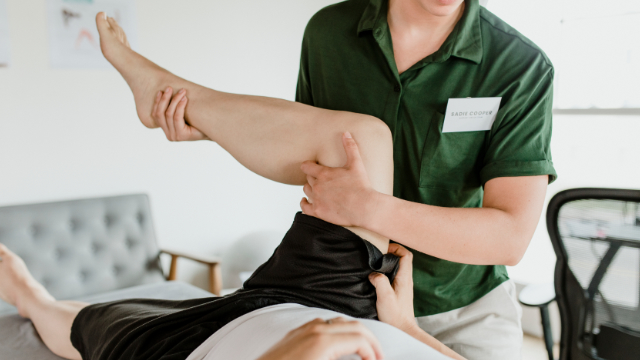News
Hip Impingement Pain: Why Physical Therapy Deserves Attention

Your hip is built like a ball–and–socket joint, designed to move smoothly whether you're walking, squatting, or sprinting. But for adults with a condition called femoroacetabular impingement (FAI) syndrome, that motion becomes anything but smooth. FAI syndrome happens when the top of the thigh bone (the femur) and the rim of the hip socket (the acetabulum) rub against each other in a way they shouldn't. This extra contact can pinch cartilage, irritate the labrum (a ring of cushioning tissue), and lead to pain or stiffness.
FAI is more common than you might think. Research shows that about one in four people has a hip shape that puts them at risk, and the condition occurs even more frequently in athletes and active adults. When symptoms like groin pain or hip clicking interfere with daily life, many people try physical therapy first. Others opt to have surgery right away. But which path actually works best? A new study set out to find the answer, and the results might surprise you.
Understanding FAI syndrome and the treatment options available
FAI syndrome is driven by the structure of your hip joint. Normally, the “ball” at the top of your thigh bone fits smoothly into the “socket” of your pelvis. But with FAI, either the ball or socket–sometimes both–has extra bone. This causes pinching, pain, and sometimes damage to important tissues like cartilage and the labrum.
The initial goals of treatment are to reduce pain and improve function, and for this reason, physical therapy is often recommended as a first–line intervention. In a typical physical therapy program, the therapist will guide patients through a specific set of exercises that are intended to make the hip stronger, more flexible, and less painful. They also teach activity modifications–like finding safer ways to squat or stretch–and offer education to help patients avoid pain and reduce the risk for further making their condition worse.
But if physical therapy does not provide adequate relief–or sometimes, immediately–the next step is often a minimally invasive surgical procedure called hip arthroscopy. In this type of procedure, surgeons use small tools to reshape the bones and fix damaged cartilage with goal of eliminating the “impingement” to help the hip joint move more smoothly and without pain.
No major differences between the two interventions
To obtain a clearer idea of how these two interventions compare, researchers in the UK recently completed a large, three–year study called the Femoroacetabular Impingement Trial (FAIT). They invited 222 patients with FAI to join and directed half to have arthroscopic hip surgery, while the other half tried a professional physical therapy program and modified their activities to be more hip–friendly. Researchers then tracked the patients' progress and measured how well their hips worked, how much pain they had, and how their joint health changed on X–rays and MRIs over time.
Here's what they found: after almost three years, surgery was linked to slightly better everyday function and pain scores–but when researchers checked the joint space (a key X–ray marker for arthritis), there was no meaningful difference between the two groups. In other words, people who stuck with physical therapy had similar long–term joint health to those who underwent surgery. MRI scans also found less damage in surgical patients, but it's not clear if these small changes matter much in real life. Both groups kept improving over time, which indicates that physical therapy can lead to steady improvements, even for those who start out sore and limited.
It's also important to note that when it comes to costs, risks, and recovery, physical therapy generally tends to have the advantage. Surgery, while often effective, carries a risk for complications, infections, and added expense, while physical therapy offers a path to recovery with far fewer dangers.
Ready to take your next step?
For those with hip pain or FAI syndrome that's affecting their daily life, physical therapy can offer some powerful benefits: less pain, more function, and excellent joint health, without the possible risks and hassle associated with surgery. While some people may need an operation down the road, this study shows that many can do just as well–if not better–by sticking with a dedicated physical therapy program and learning how to protect their hip every day.
If you or a loved one are struggling with hip pain, don't wait for things to get worse. Reach out to our physical therapy team today and discover how movement, education, and personalized care can help restore strength and comfort. We'll get you started on a personalized treatment program that's aligned with your abilities, preferences, and goals.
Want to dive deeper into the science of FAI and the treatments used in this study? Click here to read the full
November 28, 2025
Disclaimer:
The information in the articles, posts, and newsfeed is intended for informational and educational purposes only and in no way should be taken to be the provision or practice of physical therapy, medical, or professional healthcare advice or services. The information should not be considered complete or exhaustive and should not be used for diagnostic or treatment purposes without first consulting with your physical therapist, occupational therapist, physician or other healthcare provider. The owners of this website accept no responsibility for the misuse of information contained within this website.

